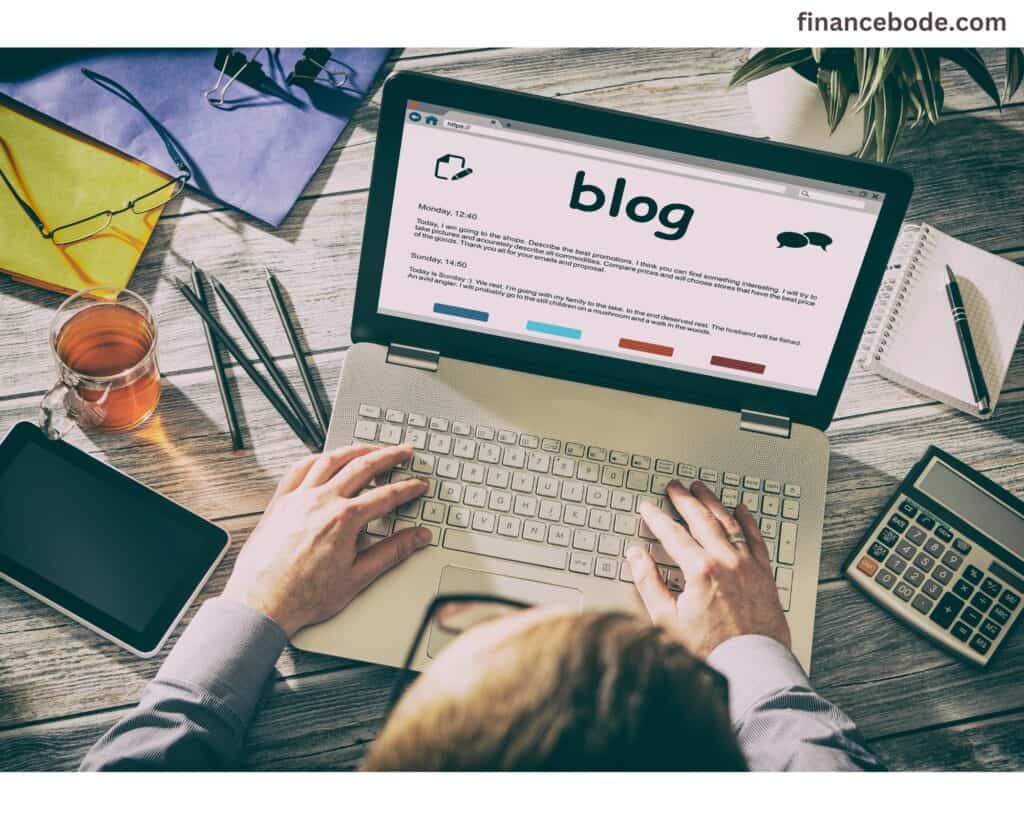How do I make my blog user-friendly? This is something important all bloggers need to know in order to attract and maintain readers.
A website/ blog that is user-friendly is easy to use, browse, and comprehend.
It also enhances user experience and leads to increased conversion rates.
As a blogger, you want your readers to feel comfortable on your blog when reading your blog post and want them to come back.
But contrary to what many imagine, not only your content is crucial, but also the user-friendliness of your blog.
In this blog article, I will show you 8 methods of making your blog more user-friendly to attract and maintain even more readers.
See also: Essential Blog Post Checklist to check for a successful post.
What Does A User-Friendly Website Mean?
A user-friendly website means a website that appears professional and is easy for readers visiting your website to browse – and gives a more pleasant user experience.
The notion behind this approach is called usability.
This simply implies that the website is easy to use and gets users to the relevant information as quickly as possible.
Usually, this is what sets the tone for all future interactions with your target audience and may easily send them fleeing in the other way if the experience isn’t favorable.
How To Create A User-Friendly Website
Creating a user-friendly website entails evaluating the requirements and preferences of your target audience and building a website that is easy to browse, aesthetically attractive, and intuitive to use. Here are 8 essential strategies to help you develop a user-friendly website.
- Listen to your readers.
- Optimize your loading time
- Ensure a clear structure and navigation choices
- Make your information easy to read
- Use a clean and readable typeface
- Offer a search feature
- Add social sharing buttons
- Create a mobile version of your blog
These 8 things will instantly make your blog more user-friendly:
Let’s look at each topic in-depth…
Listen to your readers.
Take the time to ask your frequent visitors what they want to see on your site.
Getting feedback directly from your target audience can assist you in identifying missing pieces that you may not notice on your own.
Users frequently know precisely what they don’t like about a website. Your duty is to take those remarks and make them positive by changing any elements your visitors don’t like.
When you put users at the center of your design and content, your website immediately becomes more user-friendly.
A few years back. I tried out this method on my other blog. I seek advice from my frequent visitors on what I should include in my website.
They gave me their response. I implemented several of the things identified and experienced a 25% increase in income.
Optimize loading time
A quick loading speed is a key component for the usability of your blog because nobody can endure sluggish pages.
If your blog loads too slowly, your readers will surely lose patience and leave.
This, in turn, has a detrimental influence on your visitor counts and your Google ranking.
How to increase your website loading speed
There are various techniques to improve your blog’s loading speed.
Optimize your website images.
Images frequently have a large file size (particularly if you use them immediately out of the cam and do not modify them first) and therefore raise the loading time of your blog.
By optimizing the photographs, for example, by compressing them, you will minimize your website loading time. (I recommend the usage of TinyJpg)
Another alternative is to utilize a caching plugin such as WP Rocket.
Caching involves keeping a copy of your website in the “digital memory” of your readers’ browsers. This helps your blog to load quicker since you don’t have to refresh all the data from the website every time.
Clear structure and navigation choices
Clear structure and navigation are vital to increasing your blog’s usability. It makes it easy for your readers to easily discover the content they are seeking for.
For example, to improve the navigation structure of your blog, you should ensure that.
- Your menu is immediately accessible on all pages (except landing/sales pages),
- There are not too many menu items in the menu,
- Important pages are definitely linked in the menu,
- Your menu can also be reached on mobile devices and is easy to use.
You can manage your categories in precisely the same way: Create significant subjects as a category and make sure that the category structure makes sense.
See also: How to create an SEO-Optimize blog category.
Readability: text structure
Easy-to-read language is such a vital aspect of your blog’s usability!
How do I make text readable?
- Your material is divided up into small paragraphs to make it easy to read. Long paragraphs may easily become confused and break the flow of reading.
- You utilize language that is easy for your intended audience to grasp.
- You don’t use very lengthy boxed sentences at the conclusion, of which no one recalls how they started.
- You utilize subheadings to split and categorize your material thematically.
- You loosen up your words with relevant photos and support them visually.
Legibility: Font
The choice of font in your blog is just as crucial as the arrangement of the content.
For example, if your font is too sophisticated or too tiny, your blog readers may find it difficult to understand your information.
It is vital here that you select 1-2 fonts that
Are easy to read
Harmonize with each other, and
Appear nice on various screen sizes.
Also, when you choose a font, make sure to check if
Upper and lowercase are possible,
Special characters like? Or @ all are available and presented correctly,
Umlauts are present and properly displayed,
How large are the letters and
How wide the word and line spaces are.
Make it easy for your readers to share your blog content with the world. This makes your blog more user-friendly and, at the same time, enhances your reach without you having to actively do anything about it.
You may use any GDPR-compliant plugin you can find for WordPress to achieve this. The Social Sharing Plugin – Sassy Social Share, for example, is extremely popular.
Search function
A search tool is a crucial element of a user-friendly blog.
Because many users are seeking certain content and don’t want to have to go through the menu for a long time or skim through previous articles (really! They don’t want that!).
A visible search option in the header or the menu should thus be part of the basic equipment of your blog.
Tip: An excellent search tool may also assist in enhancing the amount of time readers remain on your blog.
Because when users can discover what they’re searching for quickly and simply, they’re more likely to remain on your blog longer and view more pages.
Mobile Optimization
Mobile optimization of your blog is vital nowadays. Not just to provide an excellent user experience but also for your search engine optimization. For Google, the slogan has always been: mobile first!
Almost all users read blogs on their smartphone or tablet.
Don’t ignore her. Help people explore your blog as simply as possible.
Make sure that
- All important information is easily accessible on a small display,
- Your texts are easy to read,
- Load your pages quickly, even on your mobile phone,
- No popups you can’t close, overlay your content,
- Your menu and the search function are also easily accessible and usable on mobile displays.
How Can I Make An Article User-Friendly?
Making an article user-friendly on your website should also be a priority.
Here are 3 simple and important tips to follow to ensure your article is user-friendly for your user
Proper text formatting
You should keep blocks of text brief. Break them up using headers and bulleted lists. These are incredibly scientific, contemporary, and very clear presentations.
Make it simpler for readers to enjoy and read through than merely consisting of lengthy, continuous, and wordy paragraphs.
It’s hard for human eyes to keep track of near lines of text on a tiny screen; thus, lengthy, seamless paragraphs will confuse readers.
Easy-to-see font
User-friendly articles should have fonts that are easy to read for users.
Sans Serif fonts with basic text are the easiest to read. Glare and screen size can make novel fonts difficult to see clearly.
And another key factor is that you pick the proper font size. No one likes to have to read extremely short lines of text, even when it is in San Serif font.
See also: Important Website font to use.
Media display optimization
Use photos, infographics, and videos in your article to make sure they are visually appealing to your users.
Some individuals are more visually oriented than others and are thus more naturally attracted to pictures than words.
By using blog pictures, you offer yourself the chance to attract the attention of visual thinkers and pull people into your content and message.
A blog that is overly copy-laden or wholly without pictures will thus not attract this part of your readership, limiting your reach and the efficacy of your efforts.
What Are The Benefits Of a User-Friendly Website?
A user-friendly website has many benefits for your blog and business. Such as
- Improved user experience,
- Increased engagement and conversions,
- Improved SEO,
- Improved brand perception and credibility,
- Higher customer retention rates,
- Easier website management and maintenance,
- Long-term cost savings,
- Greater accessibility for all users, including those with disabilities,
- Improved mobile responsiveness.
With a user-friendly website, you can distinguish yourself from competitors, generate brand recognition and credibility, and position yourself as an industry leader simply by designing a website that is easy to use and browse.
A user-friendly website also aids in enhancing engagement, conversions, and client loyalty, which can lead to higher revenue and profitability.
Businesses with difficult-to-use websites may struggle to attract and keep clients, especially in areas with intense competition.
A badly designed website may result in high bounce rates and minimal engagement and eventually affect the organization’s bottom line.
To summarize, developing a user-friendly website is no longer a luxury but rather a need for businesses seeking to flourish in the digital era.
Businesses can distinguish themselves, develop brand recognition and trust, and ultimately enhance revenue and profitability by emphasizing user experience and design.
Conclusion
User-friendliness or usability is a core component and premise for user experience.
If you pay attention to a user-friendly website, you will do less to win your visitors’ loyalty.
By listening to your users, optimizing the loading speed, a clear structure and navigation, readable content and acceptable fonts, a search feature, social share buttons, and mobile optimization of your blog.
You can guarantee that your readers like remaining with you and sharing your articles. It is worth devoting time and effort to these measures.
With dedication and a user-centric approach, you can make your blog an enjoyable and valuable destination for your readers.





